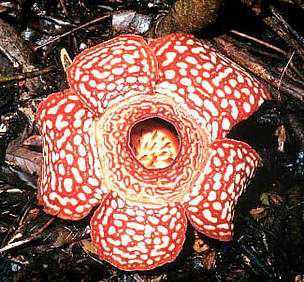
The world of plants is generally overlooked and underappreciated by the average person. Everyone understands how beneficial medicine is, for example, but no one really thinks about where the ingredients of that medicine come from. Before these ingredients are processed in a lab, they are often extracted from a botanical.
Many of the things we take for granted wouldn’t exist without the adventurous spirit of botanists and horticulturists throughout the ages. They trekked through the remote areas of the world and documented all of the strange flora and fauna they encountered along the way.
Even though so many discoveries have been made over the years, there are still thousands and thousands of undiscovered plants out there. There are hotspots on the planet that have an extremely high level of plant diversity concentrated into a relatively small area. One of them is Borneo.
Why is Borneo Important?
Borneo is the third-largest island in the world, and it is located within the Indonesian archipelago. As for which country owns the island – the answer is complicated. Roughly 75 percent of the island belongs to Indonesia, while about 24 percent belongs to Malaysia. The remaining 1 percent belongs to the sovereign kingdom of Brunei.
The entire island is home to 15,000 known species of flora and fauna. This single island is nearly more diverse than the entire continents of Africa and Europe. It sits right on the intersection between the northern and southern hemispheres, so its tropical rainforest climate allows for a wide number of botanical ecosystems. The rainforest there is thought to be the oldest in the world.
Borneo is important because it is one of the most important locations for botanical research in the world. There are an average of 3 new plant species found every month in Borneo, and over 600 species have been discovered since 1995. Thousands of plants are known but haven’t been fully studied in an attempt to exploit their full potential.
Kratom
Kratom, known scientifically as Mitragyna Speciosa, is an evergreen tree native to Southeast Asia. Over 95 percent of kratom is grown in Indonesia, though.
This tree thrives in a tropical climate and can grow over 20 feet tall. It played a big role in ancient medicinal rituals of Southeast Asian cultures, who harvested the leaves and ground them into a fine powder.
The Indonesian section of Borneo produces the Borneo strain of kratom, with White Borneo being the most popular among botanical researchers.
Langsat Tree
The Langsat tree is in the mahogany family and is commercially cultivated for its edible fruit. It can get up to 30 meters high. The fruit is not really well known in the west, but it is quite popular amongst the natives of Borneo.
Various parts of the tree have historical use in ancient medicine. The seeds were crushed to deal with ulcer symptoms. The bark was used to prevent malaria. Experiments in western medicine have led to the discovery of compounds that help severely reduce the impact of several strains of HIV.
Aglaia Plant
The Aglaia plant is actually a small tree that reaches between 2 and 5 meters in height. It thrives in any tropical climate, but it is most associated with the island of Borneo. The leaves were used to treat fevers in traditional medicine, but the experimentation of modern medicine has found that this plant has more potential than anyone thought possible.
Research shows this plant contains high concentrations of a chemical called silvestrol. This chemical has shown promise in treating cancer cells. Early results show it to be just as effective as chemotherapy without damaging healthy cells as collateral damage.
All of the plants mentioned are just a tiny sample size of the potential the most plant-diverse area on the planet has to help humanity. By understanding how these exotic areas can benefit society, we can also understand why it is important to dedicate resources towards helping protect these areas.












